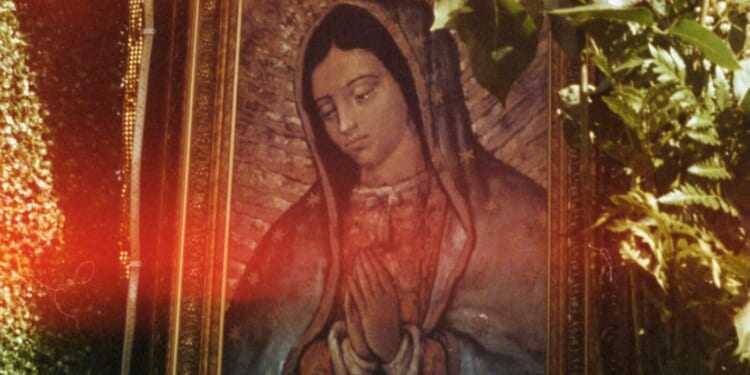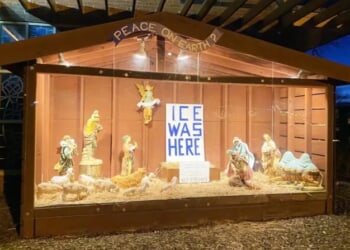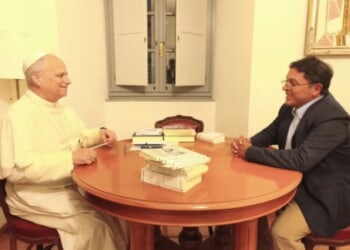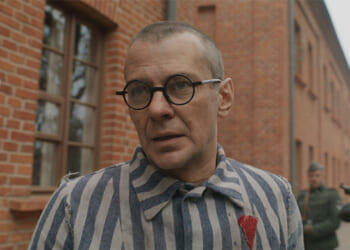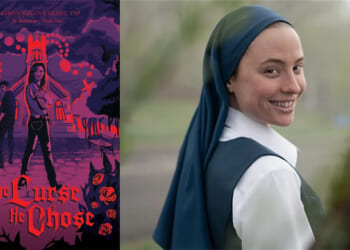The Virgin Mary, Mother of God, is present in time and place. She is now, in this moment, interceding for us with her Son. She is also, in this very moment, enacting the will of God as an instrument of Providence—or better—as the Mother of Providence.
Mary has acted throughout history, and will continue to, by making manifest the will of her Son. We know this through specific, observable events from the past. In America, the presence of Our Lady of Providence was revealed almost five hundred years ago in Mexico City.
It happened in December 1531. An Aztec man named Juan Diego was journeying to Mass when he heard the songs of birds unlike any other coming from a hill. There he witnessed the apparition of a young Aztec woman standing on rocks, glimmering in the light, dressed in traditional Aztec garb, indicating royalty.
Words of Our Lady
Juan Diego, intuiting who she was, addressed her as “My Lady, My Queen, My Little Girl.” She responded, confirming his recognition, “Know, know for sure, my dearest and youngest son, that I am the perfect ever Virgin Holy Mary, mother of the one great God of truth who gives us life, the Inventor and Creator of people.”
Echoing the words of the Gospel of John, she said that her Son is “the owner and Lord of what is around us and what is touching us or very close to us; the owner and Lord of the sky; the owner of the earth.”
Her purpose, she went on to the astonished man, was to have built “my sacred little house here,” a church so that she may make “manifest” for all people the presence of the Christ. She added that her role as Mother was “to give Him to the people in all my personal love, in my compassionate gaze, in my help, in my salvation.”
Mary informed in her words to one person what so many Americans have come to believe, that she is alongside Her son in Love, in watching over us, in helping us, and in saving us.
Juan de Zumárraga, an educated Franciscan and bishop of Mexico in 1531, was skeptical. When told, he naturally questioned Juan Diego for specifics and for evidence, before he could seriously give credence to the story and even consider building this church on a hill.
Juan Diego obediently returned and again saw the apparition of the Virgin. He told her of the bishop’s incredulity. He suggested that a more important person than a humble peasant approach him. She responded:
Listen, my youngest and dearest son, know for sure that I have no lack of servants, of messengers, to whom I can give the task of carrying my breath, my word, so that they carry out my will; but it is very necessary that you, personally, go and plead, that my wish, my will, become a reality, be carried out through your intercession.
St. Juan Diego’s Role in Providence
God’s providence is the great equalizer. Even a nobody might be given a divine task. Juan Diego obeyed, so he returned to the bishop, and made the request again. But the bishop was unmoved. There must be something concrete, thought Juan Diego, something that he could show, to convince the skeptical Zumárraga.
Embarrassed at having failed again, Juan Diego tried to avoid the Virgin, but she found him, asked him to gather flowers—blooming in December—put them inside his cloak, and take them to the bishop. Juan Diego did, and when he opened his tilma to the bishop, replacing the flowers was the beautiful image of the Virgin of Guadalupe that still exists in Mexico City today. With such proof, the bishop believed.
Mary’s Role in Providence
The Virgin had informed Juan Diego that “I am truly your compassionate mother, yours and of all the people who live together in this land.” Recognizing this proclamation regarding the Americas, bishops in the United States in 1846 proclaimed Mary, the Immaculate Conception, as the Patroness of America.
Reading her literal words to Juan Diego, she informs us that she represents her Son, that her actions make Him “manifest”—a word that has a sense of urgency and truth, calling out to us to look here and see the Lord, see the Truth, see He through Whom all things are made.
Mary informed us, just thirty-nine years after the coming of Columbus to America, that this continent is Christ’s, and through Him, Her’s as well, and that knowledge and worship of Him will be spread, initially in Her church on Tepeyac Hill, and subsequently throughout the continents to the north and south. She revealed that people will come to know the presence of God, of His will, and that He reigns over all.
Mary as the Mother of Providence
Mary as the Mother of Providence is wonderful, mysterious, yet obvious from the New Testament, in which her response to the miracle of the Incarnation is to ponder all in her heart. This, clearly, is her role in history, to ponder Her Son’s works and will in her heart, a heart of motherly love, formed at the beginning in the womb to nurture all that has been, is, and will be. As the Son of Man is present in all times, past and future, by means of the Incarnation, so too is the nurturing of the mother present at all times and places.
The Church is the body of Christ; Mary is its mother. Christ is the presence of grace; Mary is the mother of grace.
Mary as Patroness of the Americas
Soon after the appearance of Our Lady of Guadalupe, a large devotion to Our Lady emerged in Mexico. Seventeenth-century historian Fernando de Alba Ixtlilxochitl wrote that when the indigenous people “heard that the Holy Mother of Our Lord Jesus Christ had appeared, and since they saw and admired her most perfect Image, which has no human art, their eyes were opened as if suddenly day had dawned for them.”
An early Franciscan missionary in Texas, Fray Marcos de Niza, approached the Tejas Indians “singing the Litany of Our Lady” carrying “in front a picture on linen of the Blessed Virgin.”
The first Ursulines arrived in America after St. Marie de L’Incarnation had a dream of the Virgin telling her: “[to Canada] thou must go and build there a house to Jesus and Mary.”
Adele Brise, a young farm girl in Wisconsin, experienced the love of the Virgin, witnessing a similar apparition as that of Juan Diego, but three hundred years later. The Virgin appeared to her three times in the forest wearing a crown of gold stars. She identified herself as “the Queen of Heaven who prays for the conversion of sinners, and I wish you to do the same.” She demanded that Adele go among children and “teach them their catechism, how to sign themselves with the sign of the Cross, and how to approach the sacraments. … Go and fear nothing, I will help you.” The Virgin Mother’s concern for her children sent Adele on her way to found the Sisters of Good Help.
The Virgin tells us of her “personal love,” her “compassionate gaze,” her “help,” her “salvation”—such is her pondering, nurturing, transcending love across time and space. Mary feels all things, as do all mothers, pondering the transcendent moments of life in their hearts. To call upon Mary, praying for her intervention with her Son, is to call upon nurturing love, to call for help in accommodating the divine will, for she is the guidepost to following the paths of Providence.
Photo by ozzy molina on Unsplash

